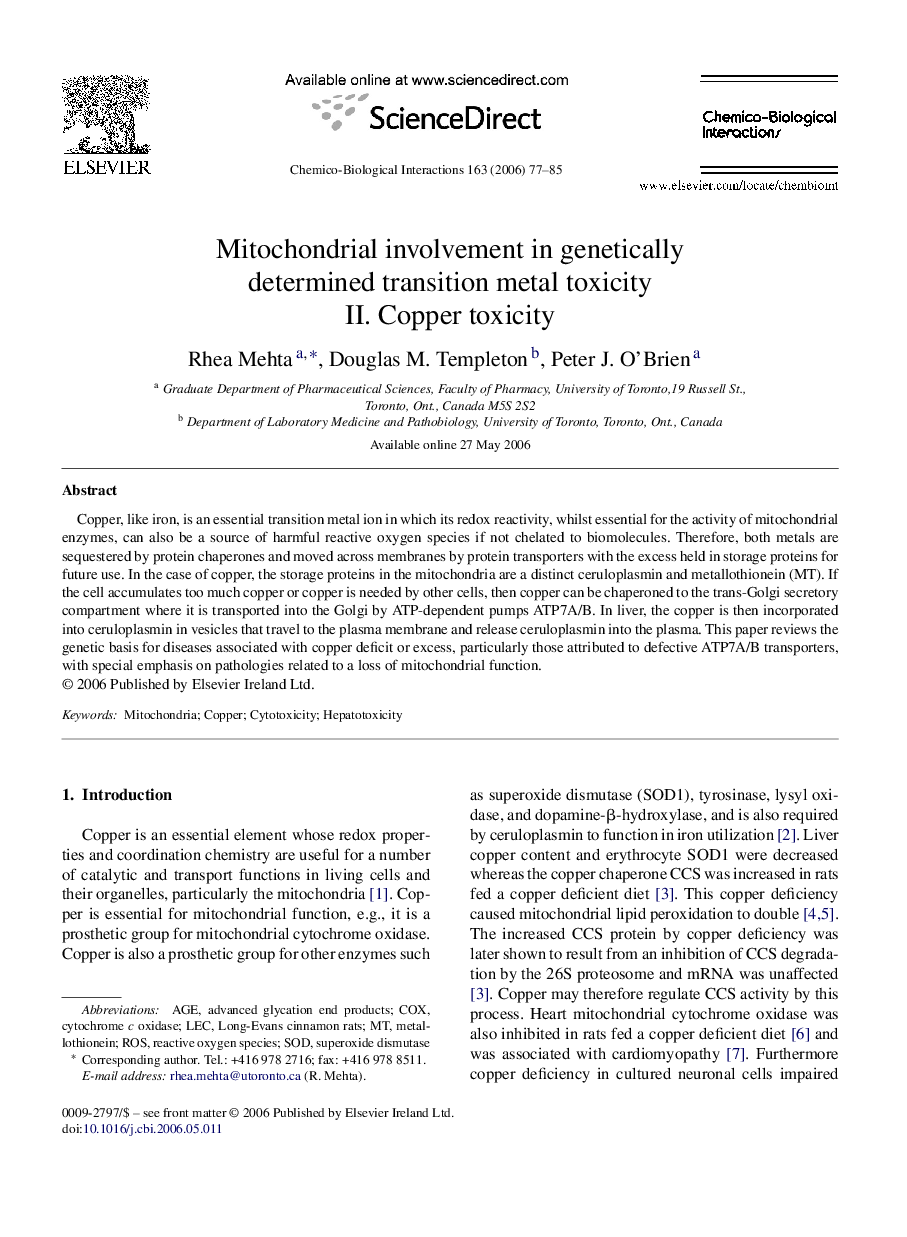| کد مقاله | کد نشریه | سال انتشار | مقاله انگلیسی | نسخه تمام متن |
|---|---|---|---|---|
| 2582459 | 1561657 | 2006 | 9 صفحه PDF | دانلود رایگان |
عنوان انگلیسی مقاله ISI
Mitochondrial involvement in genetically determined transition metal toxicity
دانلود مقاله + سفارش ترجمه
دانلود مقاله ISI انگلیسی
رایگان برای ایرانیان
کلمات کلیدی
COXLECROS - ROSSOD - سدCytotoxicity - سمیت سلولیHepatotoxicity - سمیت کبدAge - سنSuperoxide dismutase - سوکسوکس دیسموتازcytochrome c oxidase - سیتوکروم سی اکسیدازMetallothionein - متالوتونیئینAdvanced glycation end products - محصولات نهایی پیشرفته گلیساسیونCopper - مسMitochondria - میتوکندریاReactive oxygen species - گونههای فعال اکسیژن
موضوعات مرتبط
علوم زیستی و بیوفناوری
علوم محیط زیست
بهداشت، سم شناسی و جهش زایی
پیش نمایش صفحه اول مقاله

چکیده انگلیسی
Copper, like iron, is an essential transition metal ion in which its redox reactivity, whilst essential for the activity of mitochondrial enzymes, can also be a source of harmful reactive oxygen species if not chelated to biomolecules. Therefore, both metals are sequestered by protein chaperones and moved across membranes by protein transporters with the excess held in storage proteins for future use. In the case of copper, the storage proteins in the mitochondria are a distinct ceruloplasmin and metallothionein (MT). If the cell accumulates too much copper or copper is needed by other cells, then copper can be chaperoned to the trans-Golgi secretory compartment where it is transported into the Golgi by ATP-dependent pumps ATP7A/B. In liver, the copper is then incorporated into ceruloplasmin in vesicles that travel to the plasma membrane and release ceruloplasmin into the plasma. This paper reviews the genetic basis for diseases associated with copper deficit or excess, particularly those attributed to defective ATP7A/B transporters, with special emphasis on pathologies related to a loss of mitochondrial function.
ناشر
Database: Elsevier - ScienceDirect (ساینس دایرکت)
Journal: Chemico-Biological Interactions - Volume 163, Issues 1â2, 27 October 2006, Pages 77-85
Journal: Chemico-Biological Interactions - Volume 163, Issues 1â2, 27 October 2006, Pages 77-85
نویسندگان
Rhea Mehta, Douglas M. Templeton, Peter J. O'Brien,